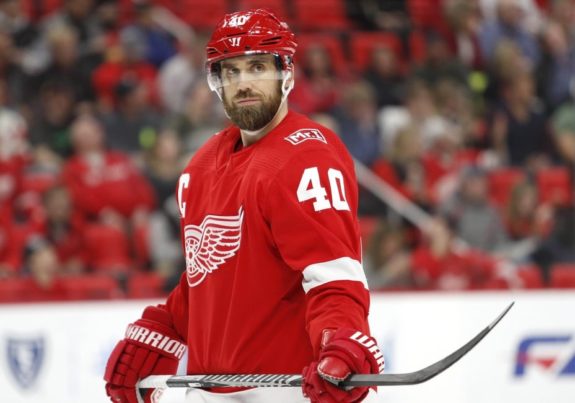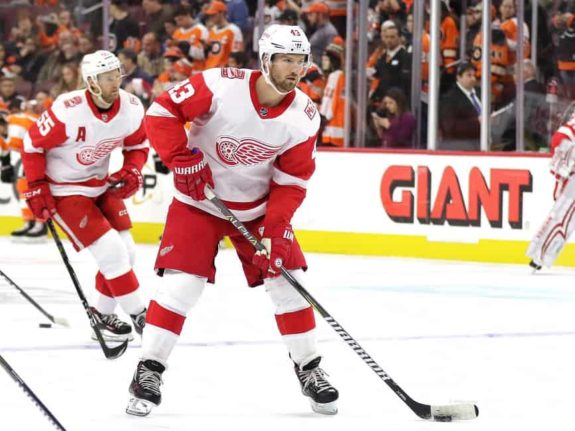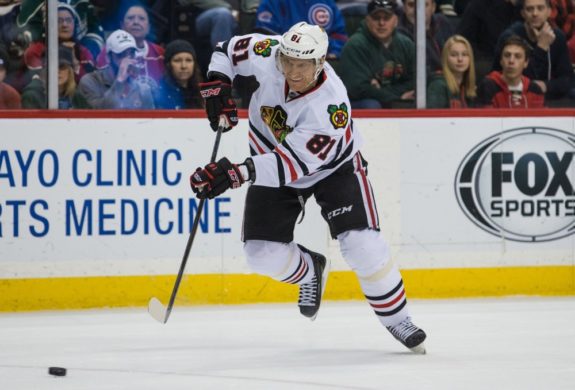After a few questionable moves, it appears that the Detroit Red Wings are done adding players this summer. However, there’s still work to be done to finalize Detroit’s roster and become salary-cap compliant.
As of now, Anthony Mantha and Dylan Larkin are in need of new contracts. Both are expected to be a part of the 2018-19 Red Wings. But apart from those two, questions still remain:
- How can the Red Wings get under the upper limit of the salary cap?
- Which players will be scratched most nights?
- Who will be sent down to Grand Rapids or their junior team?
- Is there a trade coming?
- What is Henrik Zetterberg’s status for next season?
In this week’s edition of The Grind Line, The Hockey Writers’ Red Wings coverage team attempts to make sense of these roster issues and discusses the different ways that Detroit can ice the best team possible next season.
Related: Detroit Red Wings Salary Cap Data
Tony Wolak: Larkin & Zetterberg Hold the Keys
Back in my free agency preview, I predicted that Larkin would agree to an eight-year contract with an average annual value (AAV) of $7.25 million. If this is indeed the case, then the Red Wings are in some salary cap trouble. But if they are able to sign Larkin to a bridge contract instead—perhaps two years at $5 million per—then Detroit will be fine.
We shouldn’t bank on a player taking less money, though. So if the larger contract is agreed to, then what? Then, we move on to Henrik Zetterberg.

After Larkin’s deal is finalized, the attention then turns to Zetterberg’s status. The captain would like to be back next season but will let his health determine his future. If Zetterberg, who has been dealing with a bad back, is unable to resume playing, then he’ll be placed on long-term injured reserve (LTIR) alongside Johan Franzen, and the Red Wings will be set from a salary cap perspective.
However, if the career-Red Wing’s health holds up for another season, then general manager Ken Holland will have to make a trade. With Larkin on a long-term deal and Zetterberg in the lineup, Detroit would still be nearly $4 million over the salary cap upper limit – even with Franzen on LTIR.
Assigning Martin Frk, Luke Witkowski, and Filip Zadina to Grand Rapids, plus Michael Rasmussen to his junior team, wouldn’t make the Red Wings cap-compliant and would leave lineup spots open. A trade is necessary to resolve their salary cap woes (unless an injury pops up in training camp).
Moving Gustav Nyquist’s contract would do the trick. Trading Andreas Athanasiou would help, but would still require additional finessing. But with the arrival of Zadina and Rasmussen, Tyler Bertuzzi’s emergence, and Thomas Vanek’s return, Nyquist and Athanasiou are expendable if the Red Wings can acquire a solid package of prospects and/or picks. Plus, dealing any of these players would open up a spot in the lineup to ensure Detroit’s young forwards play most nights.
Related – Red Wings Prospects: Rankings & Analysis
Rachel Anderson: Trading an Albatross Contract
The biggest question on everyone’s mind currently is whether or not captain Henrik Zetterberg will announce his early retirement. Not only that, but the Red Wings are also faced unused entry-level players and expensive contracts with no-trade clauses that are bogging down the 2018-19 roster.
Coming into the 2018-19 season, there are a few changes that should be made to the roster to free up not only cap space but also room for the next generation. In a perfect world, the no-trade clauses wouldn’t exist for guys like Danny DeKeyser or Jonathan Ericsson are really just long-term dollar signs.
In the event that Zetterberg does not retire and the Wings re-sign Larkin and Mantha, I think they should trade a few of their less productive players. Unloading a guy like Darren Helm would make some cap space for the two-way contracts currently with the Griffins or just free up some space for the future. Assigning Luke Witkowski and Martin Frk to Grand Rapids would help as well.

With a little extra cap space, Dominic Turgeon should be recalled. Playing the center position, he’s a very versatile skater and can fill the left or right wing very effectively.
Turgeon spent a few games last season with Detroit and made a good first impression. He comes in at a $686,667 average hit, which leaves a small amount of wiggle room for the Wings. Turgeon, much like Tyler Bertuzzi, would thrive if placed on an experienced line.
Obviously, if Z stays, there’s an unavoidable cap hit. If Helm can be moved along with another, possibly Glendening (there was a lot of interest in him at last season’s trade deadline) the Wings would have enough space to work in a few of the newbies from Grand Rapids.
Related: USHL & OHL Making Lasting Mark on Red Wings
Jacob Messing: Use Long-Term Injured Reserve
After playing 73 games in 2016-17 and scoring 26 goals with the Chicago Blackhawks, Marian Hossa announced he would be taking 2017-18 off due to a skin condition.
Suddenly, his surprising eligibility for LTIR offered the Blackhawks newfound cap space, as Hossa’s $5.275-million cap hit basically came off the books. It allowed the annually cap-strapped team to spend an additional $5.275 million.

It’s been seen before as the Toronto Maple Leafs had similar situations with Joffrey Lupul and Stephan Robidas, who each were placed on LTIR, but seemed healthy enough to play in many fans’ eyes, but the Maple Leafs were better off without them and/or their cap hits.
Enter Detroit and the rumors of Zetterberg retiring due to recurring back problems. The Red Wings captain has played in 323 of a possible 328 games over the past four seasons after back surgery in 2014 and has remained productive on both ends of the ice as a soon-to-be 38-year-old.
With rumors of him retiring and (leaving the Red Wings with cap recapture penalties), Holland and the team would be better off playing the LTIR card until his contract expires in 2021.
The leader would certainly be missed on both ends of the ice and in the locker room, but with a cap hit of $6.083 million, his departure would offer Detroit a higher cap hit to re-sign restricted free agents Larkin and Mantha.
It would also alleviate the needed roster spot for the logjam of forwards. There’s both upside and downside to rendering the captain ineligible.
Related – The Grind Line: Red Wings’ Most Impactful Signing